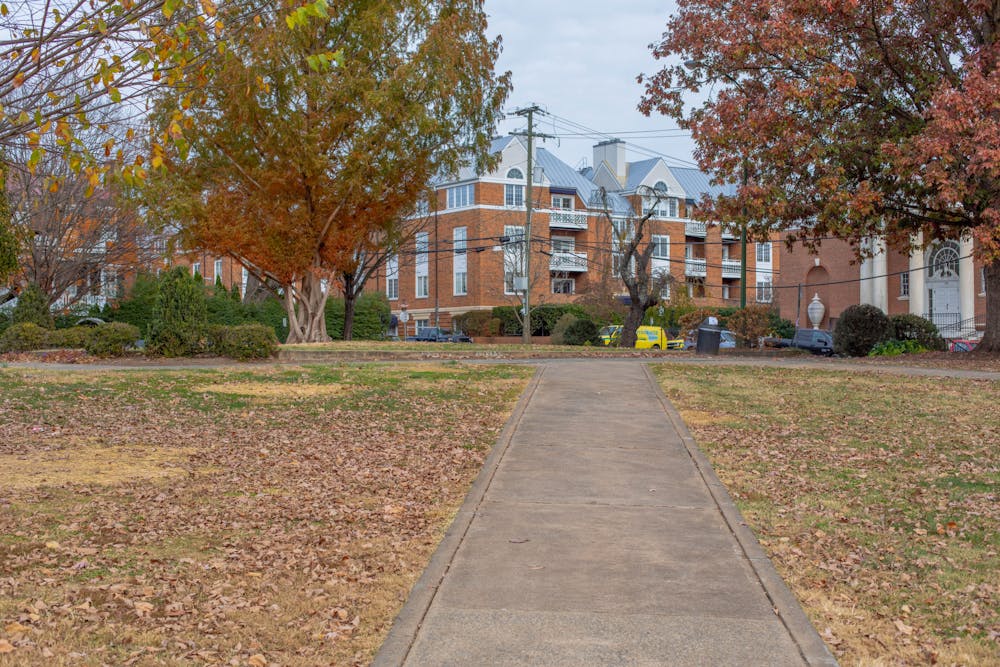Over the past few years, there have been many calls to remove Confederate and other hateful statues that fail to reflect the values we claim to hold as a nation. In Charlottesville, community activists have spent the last few years working to remove racist statues, like those of Robert E. Lee and Stonewall Jackson, and these activists have been successful in their endeavors. This work is necessary and must be continued, but it is not enough on its own. The City of Charlottesville must now be intentional about what it chooses to leave in the wake of these segregationist symbols. Specifically, the City should be looking to remedy the disturbing lack of female statues in Charlottesville — today, only one statue of a woman exists in Charlottesville, an anonymous woman’s head as part of an abstract sculpture titled “Family,” located outside of an old jail, formally known as Historic Albemarle County Jail No. 5. Women deserve to be equally represented in our communities through an impactful approach that goes beyond symbolic or ambiguous statues and honors actual, real-life historical women who changed our world or bettered their communities.
There have only been three female statues in all of Charlottesville’s history — Sacagewea, which was removed with the Lewis and Clark statues in 2021, an angel at the foot of Stonewall Jackson, also removed in 2021, and the woman’s head outside of the old jail. But the gender gap in public art is not unique to Charlottesville. There are currently 4,799 statues in our country that publicly honor men. Only 384 represent women — and many of these female statues are devoid of identity, often a mermaid, angel or another anonymous figure that does not explicitly represent a woman who has existed in human history. These figurines are less influential, often cater to male ideals of female beauty and most importantly imply that real women are not worthy of commemorating, unlike their male counterparts.
In order to fix the lack of female representation in public art and address the root causes which predicated women’s exclusion from public recognition, we need to undertake the project of representing women in our public art in a provocative way. This can be done with either permanent statues or temporary installations, but they must involve the community in important conversations regarding female representation. Women will only be given their due in public recognition once we recognize this injustice exists and engage in conversations about how to effectively remedy the issue.
For example, temporary installations in a community can tackle this issue with an interactive and modern approach. In Sofia, Bulgaria, artist Irina Tomova-Erka creates vibrant and colorful temporary statues of women through a campaign known as “Monumental Women.” Tomova-Erka’s unique protest of the lack of female statues has ignited more interaction from the public and a deeper reflection on Bulgaria’s sexist past. Similarly, last year in Charlottesville, a movement known as the REDress Project made its way to the University. Red dresses were hung across Grounds, each one symbolizing an Indigenous woman, girl or a third nonbinary gender referred to as a “two-spirit person” that had been murdered in the United States and Canada. The goal of the installation was not just to honor Indigenous victims but to draw awareness to the dangerous realities women face daily and advocate for their justice. Both of these temporary art installations disrupt the male-dominated landscape in a provocative way which forces viewers to further interrogate androcentrism.
The University has made some progress in acknowledging women’s contributions in history, but this progress has been ambiguous at best. Hidden behind the University’s Gibson Hall lies an abstract metal sculpture in honor of Catherine “Kitty” Foster, an enslaved African-American woman born in Albemarle County who served as a seamstress and laundress for the University. She later became free and an owner of property that now belongs to the University. Her memorial casts a shadow representing where her home once stood, but the sculpture is not a statue of Foster and instead focuses on the archaeological importance of the site rather than the significance of her life. Statues celebrating the achievements of men have existed for hundreds of years. If we truly value women as equal to men, then we must include women in the list of people whom we choose to commemorate and also be explicit in our attempts to celebrate their lives and publicize their accomplishments.
Statues interrupt physical space to communicate the values we hold as a community. They tower over public landscapes as a constant reminder of who has shaped our current moment. Right now, there is no sense that we value or even recognize the priceless contributions that women have made to our society. Moving forward, we must create physical spaces that convey the integral role women have and continue to play in the Charlottesville community. After all, there is no shortage of women in Charlottesville history. Charlottesville itself is named after Queen Charlotte. Sarah-Patton Boyle, the first white woman on Charlottesville’s board for the NAACP, advocated for desegregation in schools. And Heather Heyer died fighting to take down Robert E. Lee’s statue and ensure our statues represent our values. Perhaps the greatest and most beautifully poetic irony would be to put a statue of Heyer where Lee once stood to commemorate her life and her values of equity and inclusion. Today, we should not commemorate Confederate Generals because their exclusionary and racist values are not our own. Instead, we should value women’s — and all other groups — equal right to be a physical part of the history in which they participate.
Anaïs Naish is a Viewpoint Writer who writes about Identity and Culture for The Cavalier Daily. She can be reached at opinion@cavalierdaily.com.







